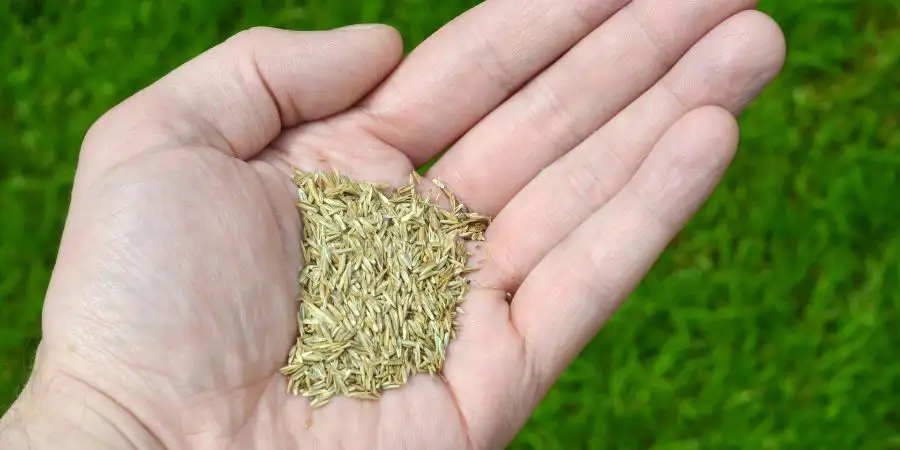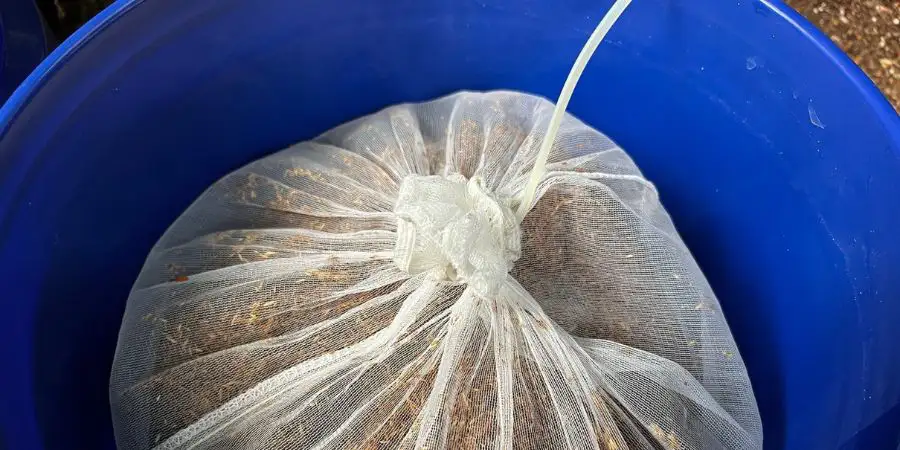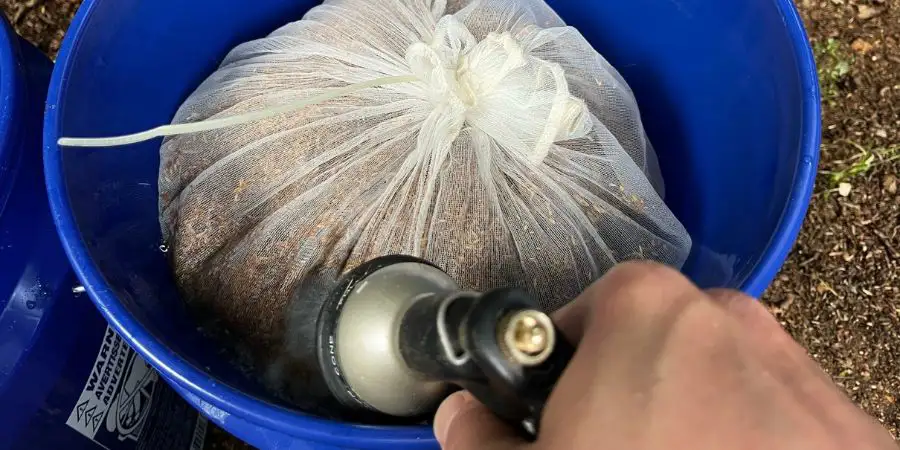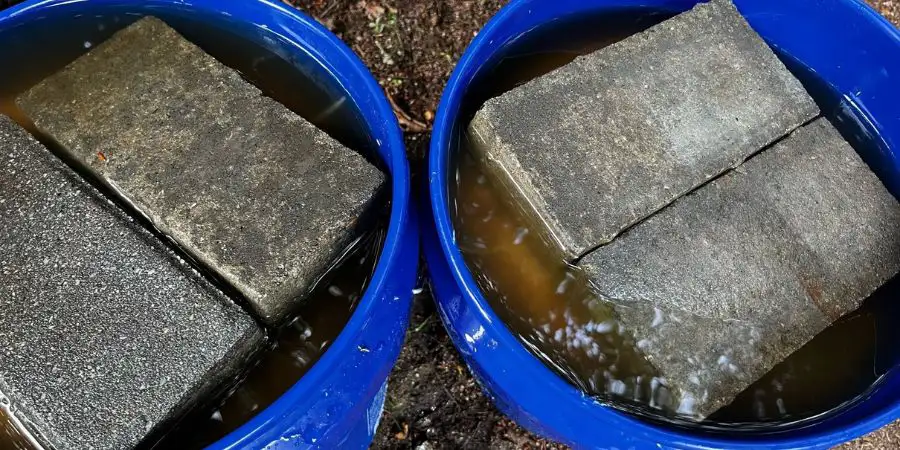How to Pre-Germinate Grass Seed
- Milorganite AgronomistMay 14, 2025
Originally posted on September 24, 2022
The most anticipated and slowest stage when seeding a lawn or patching a bare spot is waiting for the seed to germinate. How long does it take for grass to grow or germinate? It varies by species. But no matter how long, it seems to take forever. Some species are notoriously slow to germinate, such as Kentucky Bluegrass (KBG) and Bentgrass. Homeowners are often discouraged or think their efforts have failed when the seed doesn’t germinate as quickly as they think it should. It may appear that nothing is happening, but it is.
Pre-germinating turfgrass seed, particularly cool-season grasses, speeds up the germination process and reduces the time it takes to see growth once it’s distributed. Milorganite is used as a carrier and starter fertilizer, so the pre-germinated seed can be easily distributed using either a drop or rotary spreader.
Prepare the area to be seeded the same as you would when planting dry turfgrass seed.
Steps to Pre-Germinate Grass Seeds
Benefits of Pre-Germinating Grass Seed
There are a few benefits to germinating grass seed before distributing it. Less seed will be lost to dining birds, squirrels, and other pests, as well as being blown or washed away.

You’ll also be conserving some water by pre-germinating turfgrass seed. Rather than watering the seeded area for the first few days, you only need a few buckets of water. The biggest benefit to homeowners, of course, is to get the seed growing as quickly as possible!
What is Germination?
Seeds need water, oxygen, and the proper temperature to germinate. Moisture level alerts the seeds that it’s safe to grow. Some seeds also need a period of cold before germinating. Most seeds don’t require light to germinate and actually germinate best in dark conditions. This is why it’s important to follow recommendations on the depth to sow seeds, including turfgrass.
The first stage of germination is imbibition, which is the process of seeds being exposed to and absorbing water through the seed coat. Water swells the seed to loosen and soften the seed coat, allowing the root to penetrate. That’s germination.
Fall Is the Best Season to Plant Turfgrass Seed
Late-summer to early fall is the best time to plant cool-season turfgrass seed, which requires warm soil and daytime temps consistently in the low- to mid-70s °F to germinate. Growing grass seed in warm soil encourages germination, and cool air encourages growth. It’s okay to seed turfgrass in spring, but fall really is the best time of year.
Check Forecast Before Soaking Turfgrass Seed
Check the forecast for the day you plan on spreading the germinated seed. Back up 3 to 5 days, depending on how long the turfgrass species needs to soak (refer to the chart below), and that’s the day you should start soaking the seed. If inclement weather is expected, you may need to adjust the day you plan on spreading the grass seed. Turfgrass seed can’t soak indefinitely. Otherwise, the seed may quickly go from germinating to rotting.
10 Steps to Pre-Germinate Turfgrass Seed
Before beginning any seeding project, make sure the area is first properly prepared.
1. Select Turfgrass Seed
Choose turfgrass species based on your location, climate, and growing conditions. Refer to the seed label for the recommended amount of seed needed for the area to be covered. Weigh the dry seed. (You’ll need to know the weight later.)
2. Bag Seed
Select a method of “bagging” grass seed so it’s easy to change the water frequently. Place the grass seed in cheesecloth or a burlap sack, depending on how much seed you’re going to soak. Sometimes grass seed is packaged in large, plastic-woven bags, this and any material that allows water to reach all of the seed will work. Tie the fabric at the top to form a bag.

Photo Credit: Tyler Milham

Photo Credit: Tyler Milham
3. Soaking Container
Select a clean bucket or another vessel that will submerge the seed bag completely. You’re going to be changing the water daily, so choose a container that can be handled with relative ease. A five-gallon bucket works well for larger amounts of seed. Rinse and disinfect the container with a bleach solution when changing the water. If you choose to go this route, make sure the container is very well rinsed, so nothing inhibits the seed germination.
4. Water
Fill the bucket with enough room-temperature water so that all the seeds are submerged.
5. Location and Temperature
Place the container in a dark location. Maintain an air temperature of 65 °F to 72 °F.

Tip: Place a weight on the seeds to keep them from floating. Photo Credit: Tyler Milham
7. Days to Soak
How long it takes for grass seed to germinate depends on the species. Turfgrass seeds can be soaked in water for 3 to 5 days to germinate. Kentucky Bluegrass (KBG) is slow to germinate and should be soaked for five days. Don’t soak seeds for more than the recommended number of days. Soaking seeds too long can cause the seeds to rot.
8. Drain Germinated Seed
After the recommended number of days you should see tiny root tips breaking through the seed coat. Remove the seed bag from the water and allow the excess water to drain. You can hold it until it’s only dripping a little or simply place the wet bag of seeds on the ground, concrete, or lawn. Allow the bag to drain as much as possible. You’re not trying to “dry” the seeds, just drain the excess water. Don’t wring it out. The seeds may be damaged.
9. Mix Seed and Milorganite
Create a uniform mixture of Milorganite and germinated turfgrass seed, so it’s easier to distribute using a spreader. The ratio of dry turfgrass seed to Milorganite is 1:4 by weight: one pound of seed is mixed with 4 lbs. of Milorganite. See the chart below for coverage rates for popular cool-season grasses. Milorganite can be used as a starter fertilizer. It provides nitrogen, a major component of chlorophyll, and phosphorus, needed for root growth. Milorganite is virtually salt-free, so there’s no risk of burning tender seedlings.
10. Seed Distribution
Follow the distribution recommendation (pounds of seed per 1,000 sq. ft.) for the seed species you’re using. It should be noted on the label. In the chart below, we’ve provided the seed rate per 1,000 sq. ft. and the area covered by the germinated seed/Milorganite mix.
| Seed Type | Milorganite lbs/ seed mix | Seed lbs | Seed rate per 1,000 sq ft | Coverage area of Mix |
|---|---|---|---|---|
| Bentgrass | 20 | 5 | 1 lb | 5,000 sq ft |
| Bermudagrass | 20 | 5 | 1 lb | 5,000 sq ft |
| Blue Grass | 100 | 25 | 4 lbs | 6,250 sq ft |
| Blue-Rye Mix | 100 | 25 | 6 lbs | 4,250 sq ft |
| Rye Grass | 100 | 25 | 8 lbs | 3,250 sq ft |
Where to Buy
Find Milorganite®
at a store near you.
We recommend calling your local store to check for availability.
Can I Use Milorganite as a Starter Fertilizer?
Learn how to overseed your lawn and use Milorganite as a starter fertilizer with Allyn Hane, The Lawn Care Nut.

